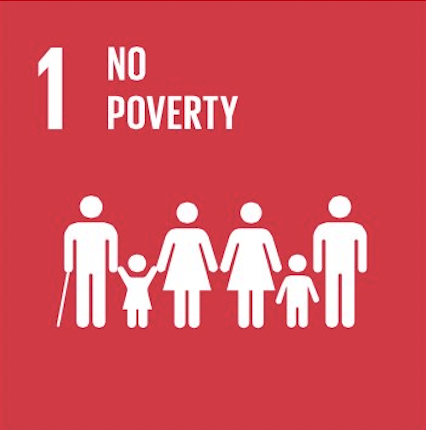FOOD: THE BIG PICTURE
On This Page: The Global Food Landscape I Food in HK I World Food Day I The UN’s SDGs I Feeding Hong Kong
LET’S TALK ABOUT FOOD
The world produces enough food to feed everyone, yet almost 1 billion people are still chronically undernourished. One of the problems is that roughly 1/3 of the food produced every year is lost or wasted, that’s enough to feed 3 billion people. If 25% of that globally was saved, it would be enough to feed 870 million people around the world.
%
of waste sent to landfills iin Hong Kong is food waste
%
of people in Hong Kong live below the poverty line
tonnes of food is rescued by Feeding Hong Kong each month
2 PROBLEMS – 1 SOLUTION
2 Problems – 1 Solution
Knowledge is power, the power to change our actions and those of the people around us. The more we understand the problems, the better equipped we are to work towards solving them so let’s work together to stop feeding landfills and start feeding people.
Background Information
The Global Food Landscape

Between now and 2050, the global population is projected to rise from 7.7 billion to 9.7 billion.

Asia is the most populated continent across the globe, having 2 of the most populated countries, China and India.

Africa is expected to experience a rapid population growth and to double its population by 2050.

Europe is expected to increase population by only 2% by 2050.

The world will need to produce 70% more food by 2050 to feed this growing population.

Agriculture is responsible for nearly 70% of deforestation worldwide.

Scientific data suggests that climate change may reduce crop yields by 2% per decade over the next 10 years.
Food in
Hong Kong
Hong Kong imports over 95% of its food.
The US, China and Brazil are the top 3 suppliers by value.
Hong Kong has around 2,200 food retailers and 16,000 restaurants.
With one food and beverage outlet for every 300 people, it has one of the highest such ratios in the world.
Nomura’s 2019 “Food Vulnerability Index” ranked Hong Kong as the world’s 42nd most vulnerable place, not far behind developing countries such as Bangladesh, Syria, and Sudan.
66 years ago, Hong Kong produced about 2/3 of the vegetables it consumed. Today, it produces about 1.6%.
World Food Day


World Food Day is a chance to show commitment to Sustainable Development Goal (SDG) 2 – to achieve Zero Hunger by 2030.

There is a different theme each year, focusing on the action needed to be done and have included climate change, migration, rural poverty, family farming and safe food now for a healthy tomorrow.

In 2021, all parties have been invited to think of the resolutions to be taken for the post-Covid-19 pandemic future.
UN’s Sustainable Development Goals

The Sustainable Development Goals (SDGs) were initiated by the United Nations in 2015. They address global challenges and list 17 goals in total.


There are some key similarities. Both the MDGs and the SDGs are specific and measurable. The 17 goals each have specific targets to be achieved within the next 15 years which are clear, concise, measurable and time-bound.



The 17 SDGs are all interconnected and recognize that no one sector can solve the world’s problems. Partnership is key which will require coordinated and combined efforts of governments, civil society and businesses.

The MDGs were focused on progress within developing countries, and what developed countries should focus on in their international aid/trade effort. The SDGs are targets for which every country is striving – not just the developing world. They are universal.


Feeding Hong Kong plays a role in delivering on 5 of the UN SDGs

No Poverty
By providing essential food relief, food banks assist front-line charities in building resilience in the poor and those in vulnerable situations.
Zero Hunger
By redirecting surplus food to those in need, food banks work towards ensuring everyone in Hong Kong has regular access to safe and nutritious food.

Reduced Inequalities
By overcoming inequality, we can help drive economic growth which is critical to achieving social cohesion and decreasing political and social tensions.

Responsible Consumption
Food banks play an important role in food rescue activities, partnering with stakeholders along the supply chain to reduce food waste and food loss.

Partnerships for the Goals
Food banks create partnerships throughout the entire food supply chain where knowledge, expertise, technology and financial resources are shared to deliver positive outcomes.
Feeding Hong Kong
HISTORY
Feeding Hong Kong began in 2009 as a volunteer initiative to redistribute fresh leftovers from bakeries to local crisis shelters.
Two years later this developed into a mission to bridge the gap between companies with surplus and charities with need.
In 2011, we registered as a Section 88 charity and opened the doors of our food bank.
WHAT WE DO
Feeding Hong Kong operates an 11,500 square foot food bank in Yau Tong and works in partnership with around 170 food companies a year to redirect their excess stocks to those in need.
Since 2011, through our partnerships with the food industry, we have rescued 8,400 tonnes of food from landfill and supported over 150 frontline charities across the city.
Have a look around our Feeding Hong Kong website to learn more about what we do, who we help, explore Volunteering opportunities and answer any questions in our FAQ.



